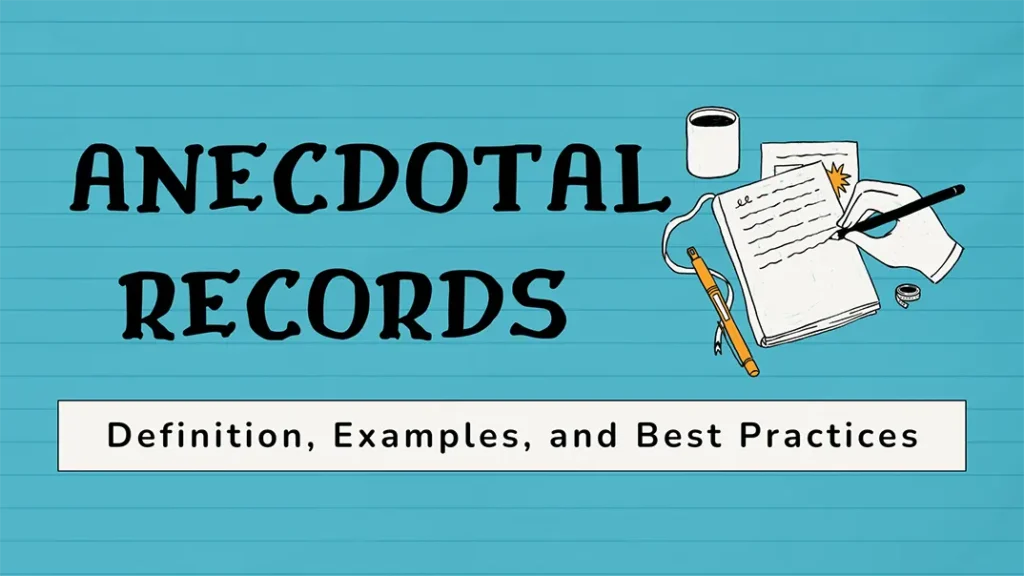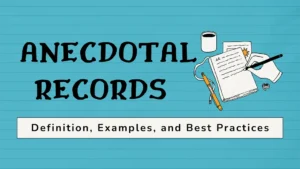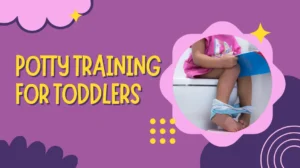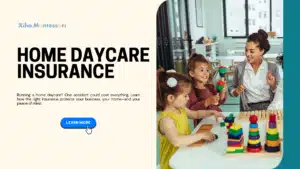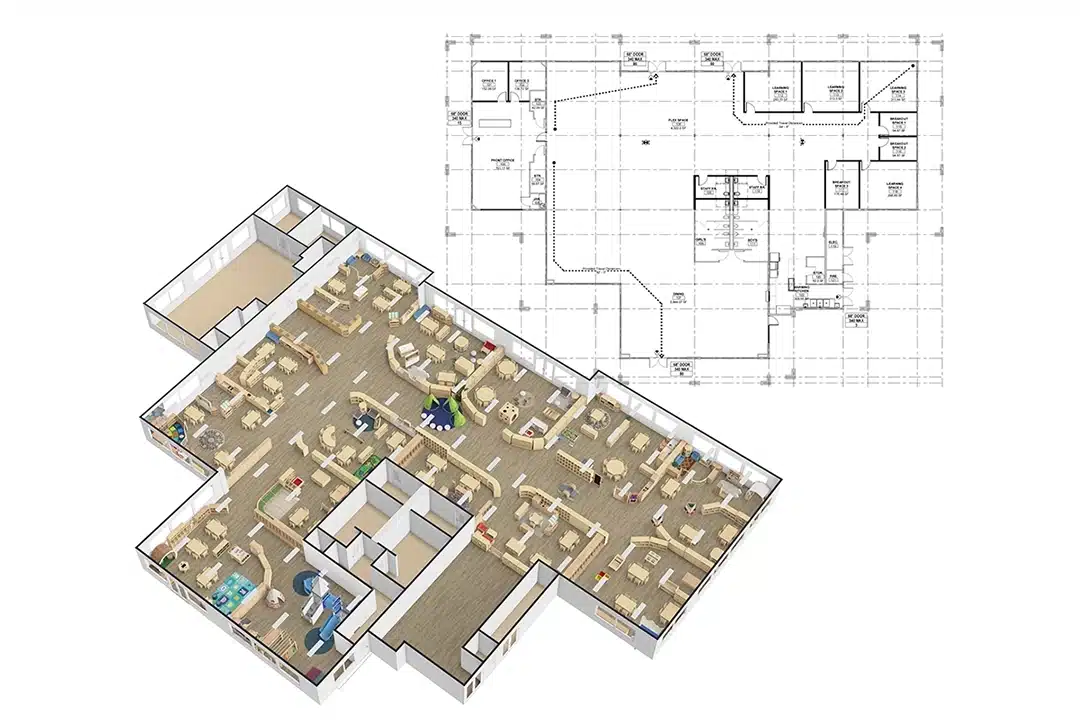Have you ever struggled to remember specific details about a child’s behavior or learning progress in your classroom? Are you unsure of how to effectively document meaningful moments of development? In early childhood education, many educators face challenges in capturing reliable, real-time observations. This is where understanding and using anecdotal records can make all the difference—but what are anecdotal records, and how can they benefit your teaching practice?
Anecdotal records are brief, factual notes written by educators to document significant observations of a child’s behavior, language, skills, or interactions in natural settings. Unlike checklists or rubrics, anecdotal records capture specific incidents as they occur, providing a clearer picture of each child’s unique strengths and needs. This method allows teachers to reflect on what they see, identify patterns over time, and tailor instruction based on real-life observations.
In this article, you’ll discover what anecdotal records are, how to write them effectively, and why they’re a powerful tool for educators. We’ll walk you through real-world examples, practical tips, and common mistakes to avoid—so you can start using anecdotal records with greater purpose and confidence.
Observation in Early Childhood Education
Observation is a cornerstone of effective early childhood education. It involves the intentional, systematic watching and recording of children’s behavior, interactions, and development as they engage with their environment. Through observation, educators gain valuable insights into how children think, feel, learn, and grow—often in ways that standardized assessments cannot reveal. Rather than focusing on outcomes alone, observation highlights the learning process in real time, providing a holistic view of a child’s abilities, interests, and needs.
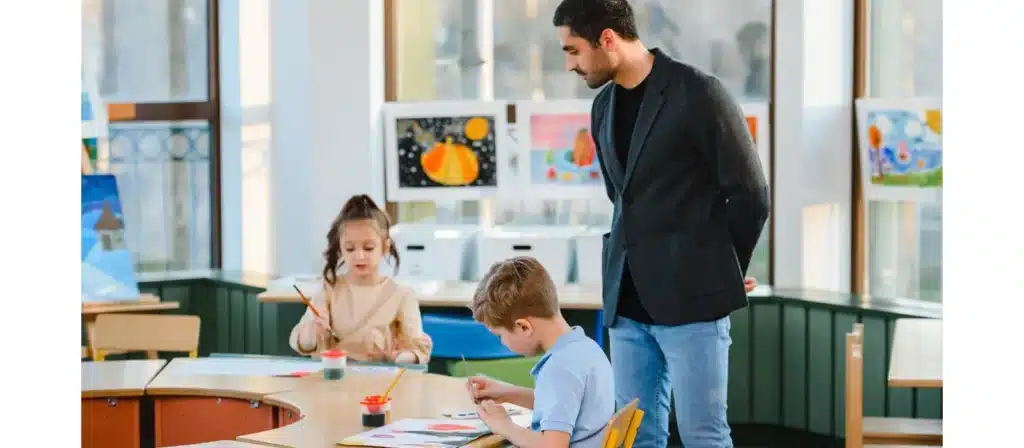
Why Classroom Observation Matters in Early Learning?
Observation helps educators understand each child’s developmental stage, learning style, and emotional needs. It forms the foundation for responsive teaching, curriculum planning, and classroom management. When teachers observe children consistently and thoughtfully, they are better equipped to:
- Identify learning strengths and developmental concerns early
- Support social-emotional growth through individualized interactions
- Make informed decisions about classroom strategies and resources
- Communicate meaningful progress with families and professionals
Ultimately, observation is not just a technique—it’s a mindset. It allows teachers to see beyond surface behavior and recognize the deeper significance of everyday moments.
Types of Observation Methods in Early Childhood Education
Understanding the different observation methods enables educators to choose the most suitable approach depending on the context and purpose. Below are the most widely used observation techniques in early childhood settings:
- Anecdotal Records: Short, factual descriptions of specific events that reveal something significant about a child’s behavior or development.
- Running Records: Detailed, sequential documentation of everything a child says or does during a set period of time.
- Checklists: Lists of predefined behaviors or skills where educators mark whether a child has demonstrated them.
- Rating Scales: Tools that allow teachers to rate a child’s performance or behavior based on specific criteria.
- Time Sampling: Observing and recording behaviors at set time intervals to track frequency or patterns.
- Event Sampling: Focusing on a specific type of behavior (e.g., aggression, sharing) and recording each time it occurs.
- Notes: Informal, brief reflections or reminders recorded by educators during or after daily routines.
- Photographic or Video Observation: Capturing moments visually to support documentation and reflection.
What Is Anecdotal Record?
An anecdotal record is a brief, objective, and factual account of a specific incident involving a child, recorded shortly after the event occurs. Unlike formal assessments or standardized tools, anecdotal records are informal, narrative-style observations that capture natural behaviors, interactions, or developmental milestones as they happen. Educators often write these records to document meaningful moments that reflect a child’s learning, progress, or challenges.
These records are written objectively and without interpretation, emphasizing what was seen and heard. Educators use anecdotal records to document social, emotional, cognitive, and physical development. They’re especially valuable because they provide a qualitative, holistic view of a child’s growth over time, revealing trends, habits, and progress that more rigid tools might overlook.

Characteristics of Anecdotal Records
- Objective and Factual
Anecdotal records are written without personal opinions or assumptions. They focus strictly on observable behaviors and actions. - Brief but Detailed
Though concise, these records include specific information such as who was involved, what happened, where and when it occurred, and how the child responded. - Written in the Past Tense
These observations are typically documented soon after the event, always written in the past tense for accuracy and consistency. - Contextualized
A good anecdotal record describes the setting and circumstances, helping others understand the context in which the behavior occurred. - Chronologically Ordered
To track development, educators often organize anecdotal records by date, creating a timeline of a child’s learning and behavior patterns. - Linked to Learning Objectives
Effective anecdotal records are often tied to curriculum goals, developmental milestones, or specific learning standards.
Sample Anecdotal Records
Date: June 12, 2025
Time: 10:15 a.m.
Setting: Outdoor play area
Observer: Ms. Kim
During outdoor play, Ava (age 4) was observed riding a tricycle around the playground path. She noticed another child, Leo, struggling to push his scooter. Ava stopped, got off her tricycle, and said, “Do you want help?” She held the back of the scooter and helped push while Leo steered. Afterward, she said, “There you go!” and returned to riding her tricycle.
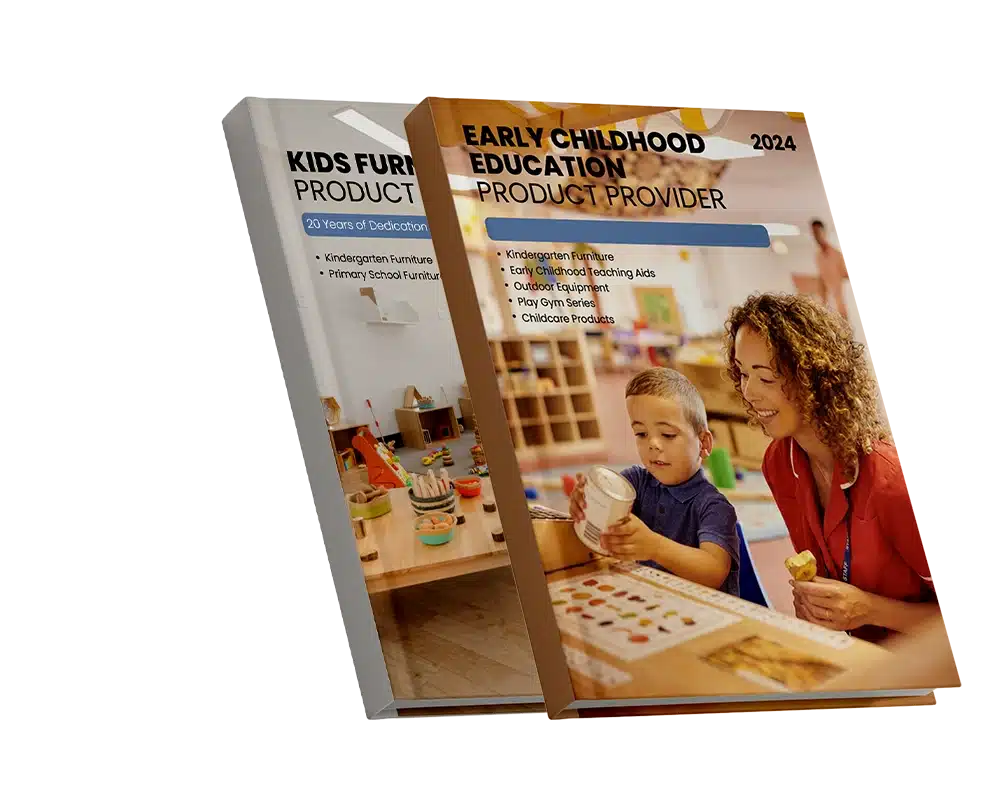
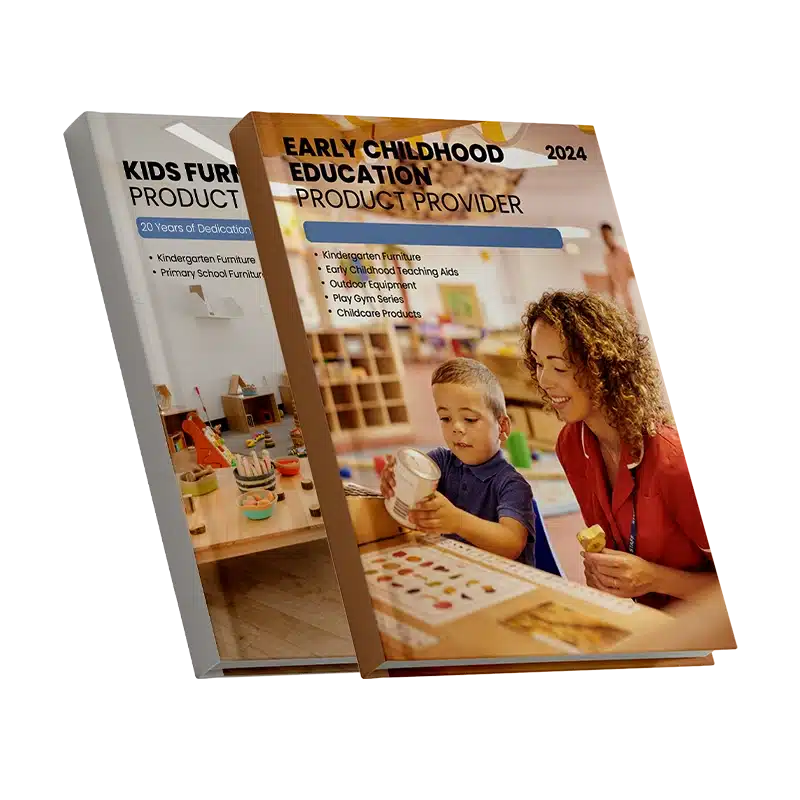
Advantages and Limitations of Anecdotal Records
Anecdotal records are a cornerstone of authentic assessment in early childhood education, but like any method, they come with both strengths and challenges. Understanding the advantages and limitations of anecdotal records allows educators to use them more thoughtfully and supplement them with other tools when needed.
Advantages of Anecdotal Records
- Capture Natural, Authentic Behavior
Because anecdotal records are based on real-life, unstructured moments, they offer a genuine snapshot of a child’s development. This makes them highly valuable for assessing behaviors and skills that might not emerge in a formal setting. - Flexible and Easy to Implement
Educators can use anecdotal records in any setting—during play, meals, outdoor activities, or transitions. No special materials or rigid schedules are required, making them easy to integrate into daily routines. - Support Individualized Teaching
These observations provide personal, child-specific data that help teachers design activities and support strategies tailored to each learner’s needs, interests, and developmental stage. - Informing Communication with Families and Specialists
Anecdotal records provide concrete, narrative-based examples to discuss during parent-teacher conferences or when collaborating with speech therapists, behaviorists, or inclusion specialists. - Track Progress Over Time
When collected consistently, anecdotal records build a developmental timeline that reveals patterns, growth areas, and emerging skills that standardized tools might miss. - Encourage Reflective Practice
Writing and reviewing anecdotal records sharpens teachers’ observational skills and encourages deeper reflection about classroom strategies, environments, and interactions.
Disadvantages of Anecdotal Records
- Subjectivity and Observer Bias
Without proper training, educators may unintentionally include personal interpretations or emotional language, which can affect the accuracy and objectivity of the record. - Time-Consuming When Not Streamlined
If not managed efficiently, documenting detailed observations for multiple children can become overwhelming and take time away from interacting with students. - Not Easily Quantifiable
Unlike checklists or rating scales, anecdotal records are qualitative. While rich in detail, they may be harder to analyze for data-driven assessments unless paired with other tools. - Inconsistency Among Staff
Without a standardized format or shared understanding, different teachers may document events with varying levels of detail or focus, making records harder to compare or compile. - Requires Follow-Up to Be Actionable
Simply recording an event is not enough—teachers must revisit, analyze, and use the record to inform planning or communication. Without follow-up, its value may be lost. - Risk of Overlooking Less Visible Children
Children who are quiet, independent, or less attention-seeking may receive fewer observations unless teachers use a tracking system to ensure equal documentation.
How Anecdotal Records Enhance Student Learning?
Anecdotal records play a vital role in supporting individualized, responsive teaching. By capturing real-time snapshots of a child’s behavior, language, and learning in natural contexts, these observations provide rich, authentic data that standardized tests often fail to deliver. When used consistently and intentionally, anecdotal records directly enhance student learning in several key ways:

- Personalized Instruction
Anecdotal records allow educators to identify each child’s strengths, interests, and learning needs. This enables teachers to design lessons, adjust groupings, or offer targeted support that aligns with the child’s current developmental stage. - Timely Intervention
Through day-to-day observations, teachers can detect emerging learning difficulties, social-emotional challenges, or developmental delays early on. Anecdotal records provide the evidence needed to initiate additional support or referrals when necessary. - Progress Tracking Over Time
Regularly written anecdotal records create a narrative of growth. By reviewing past entries, educators can see how a child’s skills and behaviors have evolved, helping to evaluate the effectiveness of instructional strategies and identify long-term patterns. - Support for Holistic Development
Unlike academic assessments that focus narrowly on testable knowledge, anecdotal records document social, emotional, physical, and language development. This comprehensive view helps educators support the whole child, not just academic performance. - Strengthened Family Communication
Anecdotal records provide concrete examples that educators can share with families during conferences or progress updates. Instead of vague feedback, parents receive real-life snapshots of how their child interacts, communicates, and learns. - Documentation for Assessment and Planning
When paired with learning standards or developmental checklists, anecdotal records support authentic assessment. Teachers can use them to demonstrate mastery, identify goals, or justify decisions in individualized learning plans.
When to Use Anecdotal Records?
Anecdotal records are most valuable when used intentionally and consistently throughout a child’s learning journey. Unlike scheduled assessments, they are spontaneous and flexible, allowing educators to document key moments as they naturally unfold. Understanding when to use anecdotal records helps educators capture the most meaningful insights into a child’s development and behavior.

During Free Play and Exploration
Unstructured playtime offers a goldmine of observable behaviors. Children are most authentic when they are self-directed—exploring materials, solving problems, or engaging with peers. These moments are ideal for capturing anecdotal records related to creativity, social interaction, and emerging interests.
When Introducing New Activities
Observing how a child responds to a new game, learning center, or group activity can reveal important information about their learning style, adaptability, and comfort with change. These moments allow educators to document first impressions and monitor progression over time.
In Response to Specific Concerns
If a child shows signs of developmental delays, behavioral issues, or emotional distress, anecdotal records serve as a valuable tool for documenting patterns and behaviors. This documentation is essential for initiating intervention, discussing concerns with families, or consulting with specialists.
During Social Interactions
Transitions, group activities, and shared responsibilities like cleaning up or turn-taking offer opportunities to observe peer relationships and social-emotional skills. Anecdotal observations made during these interactions can inform strategies for improving cooperation, empathy, or conflict resolution.
To Support Goal Setting and Assessment
Anecdotal records are instrumental during parent-teacher conferences, IEP planning, and progress reporting. They provide real-life examples of how a child is developing across various domains, offering concrete evidence to support developmental goals and teaching strategies.
During Conflict or Problem-Solving Situations
Moments of conflict—whether over toys, space, or attention—are incredibly insightful for documenting emotional regulation and social behavior. Anecdotal records written during these situations can reveal how a child manages frustration, negotiates with peers, or seeks adult support. These observations help educators identify areas where guidance or skill-building is needed, such as turn-taking, empathy, or verbal expression.
When a Child Shows Unusual or Noteworthy Behavior
Any behavior that stands out—whether it’s a sudden withdrawal, unexpected aggression, or an unusually advanced skill—warrants immediate documentation. Anecdotal records allow educators to track these moments over time, distinguishing between one-time incidents and emerging patterns. This information is crucial when discussing behavioral concerns or developmental assessments with specialists or parents.
Children Develop a New Skill
Capturing the moment a child masters a new skill—tying shoes, writing their name, or initiating a new social interaction—provides concrete evidence of growth. These records not only celebrate developmental milestones but also guide next steps in instructional planning. Regularly documenting such achievements with anecdotal records helps build a strengths-based profile for each child and supports individualized goal setting.
When Formal Assessments Are Not Applicable or Effective
Standardized testing and formal assessments often fail to capture the full range of a young child’s abilities, especially in early learning environments. For children who are shy, non-verbal, have learning differences, or come from diverse linguistic and cultural backgrounds, traditional tools may not reflect their true potential. In such cases, anecdotal records become an essential alternative.
How to Write an Anecdotal Observation?
Writing a high-quality anecdotal observation involves more than simply jotting down what you see. It requires clarity, objectivity, and an understanding of what to look for and why it matters. A well-written anecdotal record can offer profound insights into a child’s development and learning, making it a vital part of any educator’s toolkit. Here’s how to do it effectively:
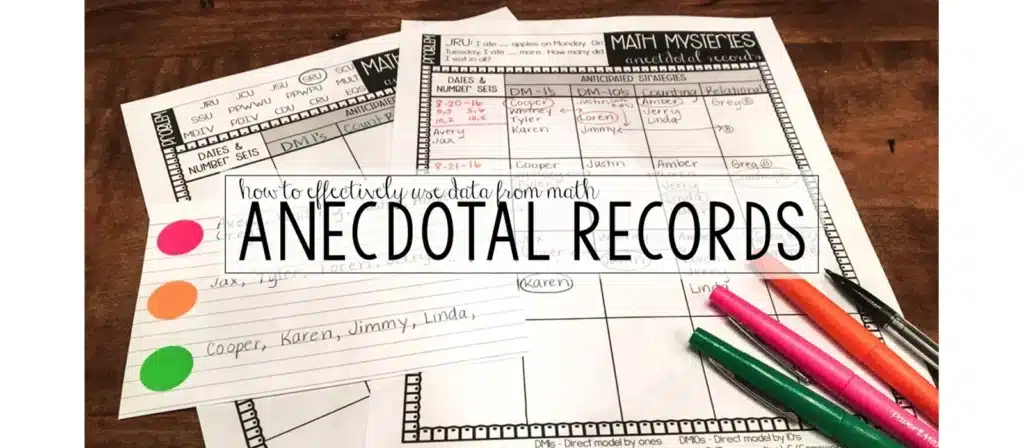
1. Include Essential Details
Start every anecdotal observation with the following components:
- Date and time of the observation
- Name or initials of the child being observed
- The setting where the behavior occurred
- Observer’s name or initials
- Activity or context of the moment
These basic identifiers ensure that the observation is well-contextualized and can be understood by others reviewing it later.
2. Write Only What You See and Hear
The most critical rule of anecdotal writing is to remain objective. Stick to facts without inserting personal feelings, assumptions, or judgments. This ensures the observation is clear, unbiased, and reliable.
✅ Unbiased Example:
“Liam sat on the carpet during group time. When the teacher read a book aloud, he raised his hand and said, ‘I have that book at home!’ He then looked at a classmate and smiled.”
❌ Biased Example:
“Liam was excited during group time and was eager to participate because he’s a bright and talkative child.”
The second version introduces personal opinion (“excited,” “bright,” “talkative”) rather than factual description. This introduces bias and makes the record less reliable.
3. Use Descriptive, Concrete Language
Detail specific actions and words. Instead of generalizations like “played nicely” or “was upset,” describe what the child did: “shared her toy with Ana without prompting” or “folded her arms, frowned, and turned away.” These rich details provide deeper insight for assessment.
4. Keep It Short But Meaningful
While thoroughness is important, avoid writing overly long narratives. Focus on the most significant part of the behavior or moment. A well-written anecdote may be just 3–5 sentences long, as long as it captures the essential elements.
5. Use Past Tense and Third Person
Since anecdotal records are written after the event occurs, always use past-tense verbs. This reinforces that you’re documenting an event that has already taken place. Always write anecdotal records in the third person to maintain a formal, reflective tone. This maintains clarity and grammatical consistency throughout your documentation.
6. Avoid Interpretation and Diagnosis
Even if a child’s behavior suggests a particular emotion or condition, do not draw conclusions. Avoid terms like “angry,” “hyperactive,” or “spoiled.” Describe what was seen and heard without labeling the child.
✅ Objective: “She stomped her feet and shouted, ‘No!’ when asked to clean up.”
❌ Subjective: “She had a tantrum and was being defiant.”
7. Connect to Developmental Domains
Where appropriate, align your observations with learning standards or developmental areas such as:
- Language development
- Fine and gross motor skills
- Cognitive skills
- Emotional regulation
- Social interaction
This makes the record more meaningful for curriculum planning, documentation, and family communication.
8. Record as Soon as Possible After the Event
Timing matters. The sooner you write the record, the more accurate the details will be. Keep a notebook, tablet, or app handy to document observations quickly after they happen.
Anecdotal Record Examples in Early Education
Anecdotal records provide rich insight into a child’s developmental progress by capturing moments of natural behavior in real-time. Below are four examples from key developmental domains in early childhood education, each followed by a short analysis explaining how the observation supports learning and instructional planning.
1. Language Development
Observation:
Date: March 12, 10:15 a.m. – Literacy corner
While looking at a picture book, Emily pointed to a dog and said, “That’s a big puppy!” The teacher asked, “What is the puppy doing?” Emily responded, “He’s chasing the ball!”
Analysis:
This observation demonstrates Emily’s ability to use descriptive language, form complete sentences, and respond to open-ended questions. It provides evidence of age-appropriate vocabulary development and early narrative skills. The teacher might plan further story-based activities to support her expressive language growth.
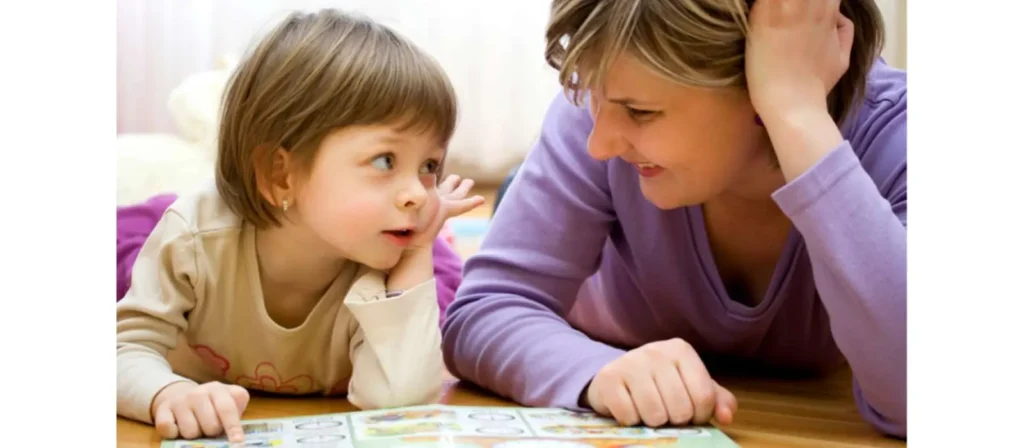
2. Social-Emotional Development
Observation:
Date: April 3, 11:30 a.m. – Outdoor play
During sandbox play, Jordan handed a shovel to Liam and said, “You can dig here.” When another child tried to take Liam’s spot, Jordan said, “Wait your turn, please.”
Analysis:
This interaction reveals Jordan’s developing social awareness and conflict resolution skills. He is not only initiating prosocial behavior but also using polite language to set boundaries. The teacher can use this moment as a positive example during group discussions about friendship and fairness.
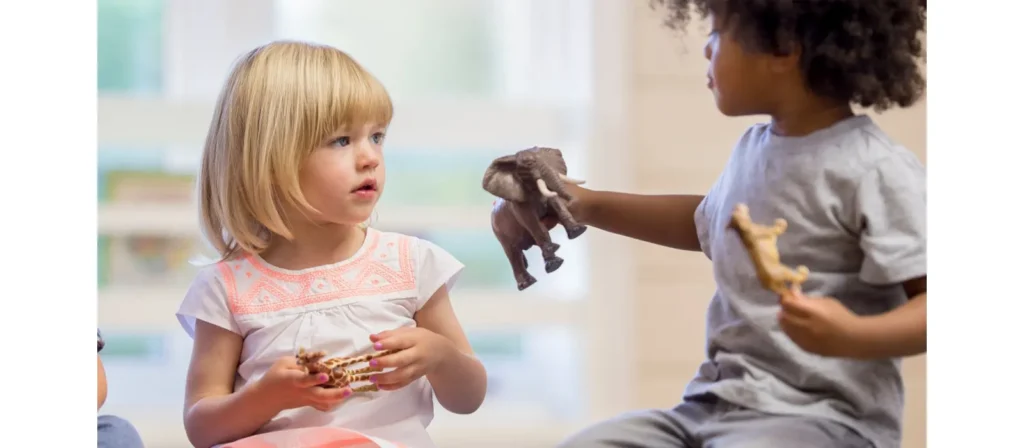
3. Cognitive Development
Observation:
Date: May 5, 9:50 a.m. – Math center
Maya sorted plastic bears by color into separate cups. She said aloud, “Red goes here, blue goes here.” When finished, she counted the red bears and said, “One, two, three, four. There are four red ones!”
Analysis:
Maya demonstrated both classification and one-to-one correspondence, key cognitive skills in early math development. This record supports the child’s understanding of sorting and counting, and it suggests readiness for more advanced math tasks like comparing quantities or simple addition.
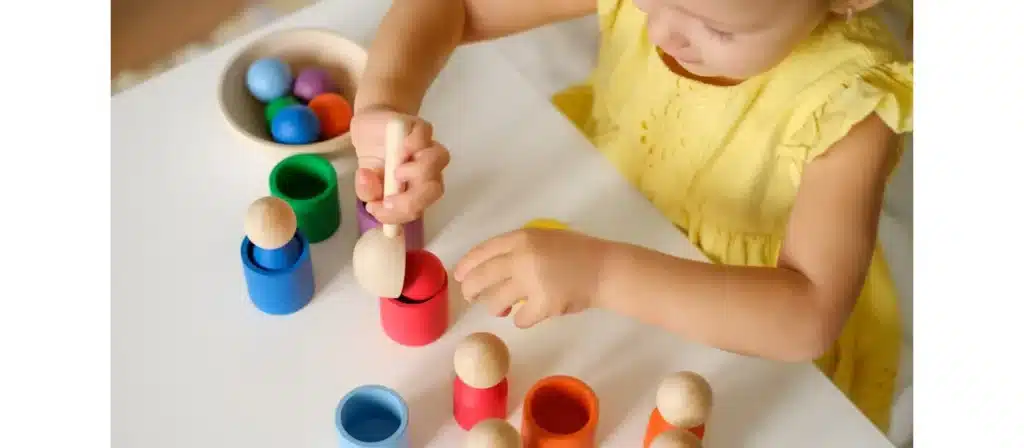
4. Physical Development (Fine Motor Skills)
Observation:
Date: February 28, 2:10 p.m. – Art table
During a cutting activity, Leo used scissors to cut along a zigzag line. He adjusted the angle of the paper with one hand while carefully snipping with the other. He completed the task and said, “I did it!”
Analysis:
This record highlights Leo’s growing fine motor coordination and bilateral hand use, both of which are essential for writing and other classroom tasks. The observation also reflects his persistence and confidence, valuable dispositions for learning. The teacher may offer more challenging cutting patterns or pre-writing activities to build on this progress.
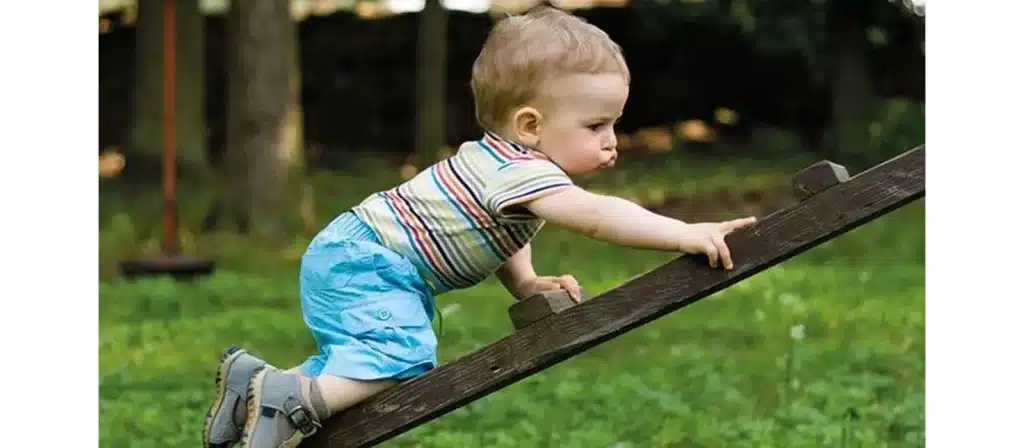
5. Adaptive Development (Self-Help Skills)
Observation:
Date: April 25, 12:05 p.m. – Lunch area
During lunchtime, Marcus opened his lunchbox, peeled his banana without assistance, and used a spoon to eat yogurt. After finishing, he wiped his hands and threw away his trash without being prompted.
Analysis:
This observation shows Marcus’s growing independence in managing basic self-care routines. These adaptive behaviors—feeding himself, cleaning up, and managing personal belongings—are essential for school readiness and life skills. It also indicates confidence and a clear understanding of routine expectations. Teachers can use this data to track progress in daily living skills or identify areas where other children may need support or modeling.

How to Use Anecdotal Records for Assessments?
Anecdotal records serve as powerful tools for authentic, observation-based assessment in early childhood education. When collected consistently and purposefully, these brief narratives provide real evidence of a child’s learning and development across multiple domains. Unlike standardized tests, anecdotal records allow educators to evaluate children in natural settings, capturing their abilities as they emerge during everyday experiences.
1. Align Observations with Developmental Goals or Standards
Each anecdotal record should connect to specific learning outcomes, developmental milestones, or curriculum objectives. For example, a note about a child retelling a story can be linked to early literacy standards, while an observation of independent toileting supports self-care benchmarks in adaptive development.
Tip: Use local frameworks such as the Early Learning Outcomes Framework (ELOF), state standards, or your program’s developmental checklist to guide what to observe and document.
2. Analyze Patterns Over Time
Anecdotal records are most useful when reviewed collectively, not in isolation. By analyzing a series of observations, educators can identify learning patterns, emerging strengths, and consistent areas of difficulty.
- Has the child demonstrated growth in a specific skill (e.g., turn-taking, fine motor control)?
- Is there consistency across different contexts or settings?
- Are there missed milestones or potential delays?
This reflective process transforms isolated observations into meaningful data for planning and intervention.


3. Use as Evidence in Portfolio or Narrative Reports
Many early learning programs use child portfolios or learning stories to document progress. Anecdotal records provide concrete evidence to include in these formats. When organized by domain or learning outcome, they build a clear picture of development over time and support more accurate reporting.
- Combine anecdotal records with work samples, photos, or teacher reflections
- Use quotes and exact behaviors from records to enrich progress reports
4. Support Individualized Education
Anecdotal records provide the granular, day-to-day insight educators need to tailor learning experiences to each child’s unique needs, interests, and developmental stage. By observing how a child engages with materials, peers, and challenges, teachers can design instruction that aligns with their strengths and addresses areas needing support. Educators can use this insight to:
- Modify classroom activities or groupings
- Plan targeted small group instruction
- Support Individualized Education Programs (IEPs) or behavior plans with documented evidence
In inclusive settings, these records are especially valuable for advocating and tracking progress.
5. Support Communication with Families and Colleagues
When used in parent conferences or professional team meetings, anecdotal records add clarity and credibility to discussions about a child’s development. Rather than offering vague descriptions, educators can reference specific, objective examples of behavior or skill use.
6. Combine with Other Assessment Tools
While anecdotal records are valuable on their own, they become even more powerful when combined with checklists, portfolios, or learning stories. This multimodal approach ensures a balanced assessment strategy that meets both program requirements and individual needs.
7. Maintain Objectivity and Reliability
To ensure that assessments based on anecdotal records are fair and reliable, consistency is key. Train all staff on how to write objective, factual observations, and establish a system for organizing and reviewing them regularly. Use consistent criteria when evaluating a child’s progress based on recorded evidence.
How Anecdotal Records Support Inclusive and Individualized Teaching?
Inclusive and individualized teaching recognizes that every child is unique, with different strengths, learning styles, cultural backgrounds, and developmental needs. Anecdotal records serve as a bridge between observation and action, helping educators create responsive environments where every child can thrive.

Capturing the Whole Child
Standardized tools often overlook the subtle, rich layers of a child’s personality, behavior, and potential. Anecdotal records allow teachers to notice and celebrate these nuances, whether it’s a child’s creative problem-solving, leadership in group play, or emotional resilience. By documenting such authentic moments, educators gain a holistic view of the child beyond academic performance alone.
Valuing Diverse Ways of Learning
Children express knowledge in many ways—through speech, movement, play, or art. Anecdotal records are flexible enough to capture these varied expressions, making them especially valuable for observing children with learning differences, dual language learners, or those from culturally diverse backgrounds. This inclusivity helps teachers avoid one-size-fits-all instruction and instead embrace multiple paths to learning.
Providing Evidence for Tailored Support
For children who need additional support—whether due to developmental delays, behavioral concerns, or emotional needs—anecdotal records offer clear, concrete evidence to inform intervention strategies. Educators can identify patterns, document progress, and collaborate effectively with specialists and families, all based on real-world behavior.
Fostering Equity and Representation
Every child deserves to be seen and heard in the classroom. By regularly recording anecdotal observations across all children, educators ensure that no one is overlooked due to quietness, language barriers, or cultural differences. This helps combat bias and fosters a more equitable approach to planning, assessment, and classroom interaction.
Adapting Curriculum to Individual Interests
Anecdotal records often reveal children’s interests—whether it’s dinosaurs, building towers, or caring for plants. These interests can be woven into lesson plans, making learning more engaging and meaningful. Individualizing instruction in this way boosts motivation and supports deeper understanding.
Empowering Educator Reflection
In reviewing anecdotal records, teachers can reflect on their own practices and biases. Are certain children being observed more than others? Are all learning styles and abilities being equally supported? These records help educators become more self-aware and intentional in creating inclusive, nurturing spaces.
Organizing and Managing Your Anecdotal Records
Consistent and organized documentation is key to maximizing the value of anecdotal records in early childhood education. A well-managed system not only saves time but also ensures that observations are accessible, reliable, and useful for assessments, planning, and communication with families.
1. Choose a Consistent Tool
Decide whether to use paper-based, digital, or hybrid systems depending on your setting, access to technology, and team preferences.
- Paper-based options: Notebooks, sticky notes, printed forms, index cards
- Digital tools: Shared documents (Google Docs/Sheets), apps like Lillio, Brightwheel, or Learning Genie
- Hybrid systems: Jot quick notes by hand, then transfer them to a digital log weekly
Tip: Choose a format that makes it easy to record quickly and review later.

2. Use a Standardized Content Format
Consistency in anecdotal records is written across your team, ensuring clarity, reliability, and ease of use. A standardized content format helps educators focus on relevant details, minimize subjectivity, and streamline documentation for assessment and planning purposes.
3. Develop a Consistent Filing System
Sort your anecdotal records by child, date, and developmental area. Consider color-coding for different domains (e.g., red for social-emotional, blue for language, green for cognitive) or labeling files by curriculum standard. This makes it easier to track growth and prepare documentation for parent meetings or reports.
4. Create Individual Portfolios
Maintain a portfolio for each child that includes anecdotal records, work samples, checklists, and photographs. Portfolios help build a comprehensive view of the child’s learning journey and are especially valuable during conferences, assessments, and transitions to new classrooms or grade levels.
5. Set a Regular Observation Schedule
To ensure balanced documentation, aim to observe each child multiple times per week across different settings (free play, structured activities, outdoor time). Use a rotation chart or checklist to track who has been observed and which domains have been covered.
6. Use Tags or Categories for Quick Retrieval
Whether digital or paper-based, tagging each observation with categories—like “language,” “fine motor,” or “peer interaction”—makes it easy to sort and analyze later. Digital systems often allow filtering and exporting reports with a single click.
7. Secure and Protect Records
Whether paper or digital, anecdotal records contain sensitive information. Store them securely and share them only with authorized staff and families.
- Lock physical files in a cabinet
- Use password-protected platforms for digital records
- Avoid using full names in informal notes to protect privacy
8. Regularly Review and Reflect
Set aside time weekly or bi-weekly to review your anecdotal records. Look for developmental patterns, progress toward learning goals, and areas where support may be needed. Use this reflection to adjust your instructional strategies and classroom environment accordingly.
- Are some children over- or under-documented?
- Are certain domains (e.g., science or adaptive skills) missing?
- What instructional adjustments are needed based on what you’ve seen?
10 Ideas to Make Anecdotal Records Effective and Useful
While understanding how to write and organize anecdotal records is essential, it’s often the small, consistent habits that determine how effective and sustainable your system becomes. Here are some strategies to make your anecdotal records more powerful and practical:

1. Keep Sticky Notes or Labels Handy
Place a stack of sticky notes or pre-labeled observation cards in each learning center. This encourages spontaneous recording of real-time moments without disrupting activities or requiring a trip to your desk.
2. Create a “Snapshot” Station
Designate a small clipboard or tablet zone for quick jotting. Encourage co-teachers or assistants to contribute one or two short observations per day. Over time, these snapshots build a rich picture with minimal effort.
3. Use Child Initials and Quick Codes
Develop a short code system for frequently used developmental areas (e.g., “SE” for social-emotional, “FM” for fine motor). Combine with initials to jot down observations fast and expand them later.
4. Anchor Observations to Learning Themes
Instead of capturing random moments, anchor some of your observations around current classroom themes or units (e.g., during a “Community Helpers” week, focus on role-play, vocabulary use, or problem-solving).
5. Use the “3 W’s” Method
When short on time, capture the Who, What, and Where:
- Who was involved?
- What did the child do or say?
- Where did it happen?
This quick structure ensures nothing critical is left out and can be expanded later into a full anecdotal record.
6. Review as a Team Weekly
Set a time during planning meetings to review one or two anecdotal records per child. This promotes team-wide insight, identifies observational gaps, and helps align instructional responses.
7. Rotate Your Focus Strategically
Rather than trying to observe everyone every day, set a weekly focus schedule by domain or group. For example, observe language development on Mondays, motor skills on Tuesdays, and so on.
8. Integrate Photos as Memory Triggers
Use a photo (even one not shared with families) to jog your memory about an event. This helps when you’re too busy to write immediately and want to recall the observation later in detail.
9. Make “Silent Observations” a Routine
Set aside 5–10 minutes a day where teachers quietly observe without interacting, just taking notes. This habit sharpens your awareness and ensures regular, objective entries.
10. Use Color-Coding for Instant Clarity
Assign specific highlighter colors or digital tags to observation domains. When reviewing or sorting, you can visually spot gaps in documentation or patterns in development.
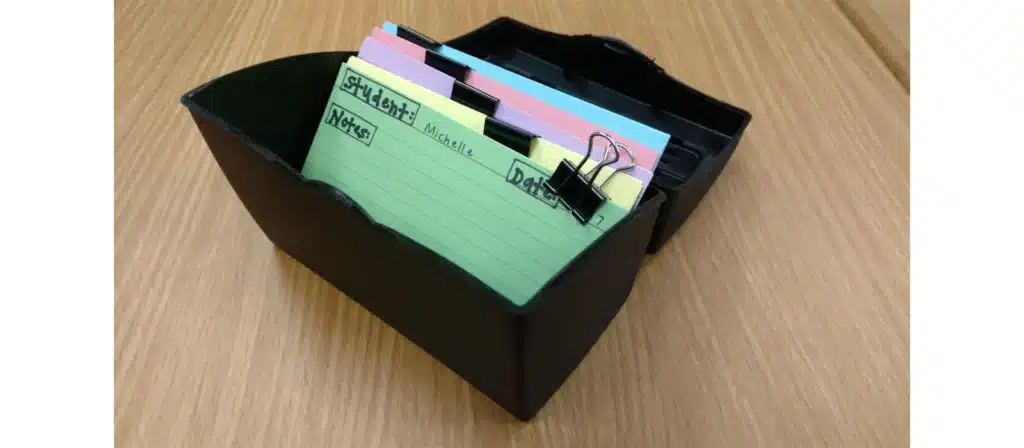
Anecdotal Records vs. Other Observation Methods
While anecdotal records are widely used in early childhood education, they are not the only way to document children’s development. Understanding how anecdotal records compare to other common observation methods helps educators select the right tool for different goals. Below, we explore how anecdotal records differ from notes, cumulative records, and running records in both structure and purpose.
Anecdotal Records vs. Notes
Notes are informal, often fragmented comments that educators jot down quickly to capture a thought, behavior, or reminder. Unlike anecdotal records, notes may not follow a standard format or include full context. They are typically used as temporary or internal cues, such as “Aiden had trouble with scissors today” or “Follow up on Ella’s group work.”
Anecdotal records are informal but structured observations written with a specific purpose. They follow a consistent format and provide more detail than casual notes, but remain flexible and context-based.
| Aspect | Anecdotal Records | Notes |
|---|---|---|
| Content | Structured, factual narrative of a specific event or behavior | Brief, informal reminders or bullet points |
| Detail Level | Descriptive and context-rich | Often lacks detail or full context |
| Purpose | Used for assessment and planning | Often for personal use or memory aids |
| Objectivity | Emphasizes objectivity and clarity | Can be vague, may include subjective phrasing |
| Documentation Value | Highly suitable for tracking development | Low to medium—requires expansion to be useful |
Anecdotal Records vs. Cumulative Records
Cumulative records refer to long-term files that track a child’s progress across months or even years. These may include standardized test results, report cards, health forms, and summaries of developmental milestones. They serve as an official, ongoing record of the child’s history in the educational system.
Anecdotal records, on the other hand, are real-time snapshots of behavior or skill development in natural settings. While cumulative records provide a broad overview, anecdotal records capture the small, meaningful moments that show how learning is happening.
| Aspect | Anecdotal Records | Cumulative Records |
|---|---|---|
| Focus | Specific behaviors or moments | Comprehensive, long-term academic and developmental history |
| Format | Individual event-based observations | Includes reports, grades, medical records, etc. |
| Usage | Day-to-day instructional planning | Tracking the overall educational journey |
| Flexibility | Informal and flexible | Formal and structured |
| Audience | Teachers, specialists, and families | School administrators, specialists, and higher institutions |
Anecdotal Records vs. Running Records
Running records are highly detailed, minute-by-minute accounts of everything a child says and does during a short, pre-determined observation period. They often include context, exact wording, and the sequence of actions, providing a complete “real-time script” of behavior.
Anecdotal records focus on one specific incident, selected because it appears meaningful or revealing. They are less exhaustive and more selective, highlighting moments of learning rather than attempting to record everything.
| Aspect | Anecdotal Records | Running Records |
|---|---|---|
| Length and Detail | Brief snapshot of a significant event | Continuous, moment-by-moment recording over time |
| Time Commitment | Quick to write after the event | Requires extended observation time |
| Focus | Key behaviors, reactions, or learning moments | Full account of all behaviors during a set time |
| Best Use Case | Documenting milestones or unusual behavior | Studying detailed behavior patterns or learning processes |
| Interpretation | Factual summary without interpretation | Often includes time stamps and may be analyzed more formally |
Choosing the Right Method
Each method serves a different purpose, and no single tool is always best. Educators often combine these approaches to form a fuller picture of a child’s development. Anecdotal records are especially useful when:
- Time is limited, but focused insight is needed
- You want to track social, emotional, or language development in context
- The goal is to support planning, assessment, or communication with families
By understanding the strengths and limitations of each observation method, educators can choose and use them more effectively.
ABC Method in Anecdotal Records
For educators seeking a more analytical approach to documenting behaviors, the ABC method—which stands for Antecedent, Behavior, Consequence—offers a clear, objective structure. This format is especially useful for understanding behavioral patterns and planning appropriate interventions or support strategies.
- A – Antecedent
This refers to what happened immediately before the behavior. It includes environmental context, interactions, or triggers that may have led to the child’s action. - B – Behavior
This is the specific behavior that the child exhibited. It should be recorded exactly as observed—clear, factual, and without interpretation. - C – Consequence
This document describes what happened immediately after the behavior, including reactions from adults or peers, or how the situation was resolved.
ABC Example in an Anecdotal Record
May 3, 10:20 a.m.
Antecedent: During center time, another child reached for the toy truck that Aiden was playing with.
Behavior: Aiden yelled, “No! Mine!” and pushed the child’s hand away.
Consequence: The teacher approached and said, “We use gentle hands. Let’s find another truck or take turns.” Aiden looked down and said nothing.
Why Use the ABC Method?
- It helps identify triggers and patterns in behavior.
- It’s ideal for children with behavioral or emotional challenges.
- It supports targeted behavior plans or discussions with specialists and families.
- It offers a consistent way to document objectively and analyze behavior constructively.
Common Mistakes and How to Avoid Them
Even experienced educators can fall into common traps when documenting anecdotal records. These mistakes can compromise the accuracy, usefulness, and fairness of your observations. Below are the most frequent errors, along with practical strategies to avoid them and strengthen your documentation practices.
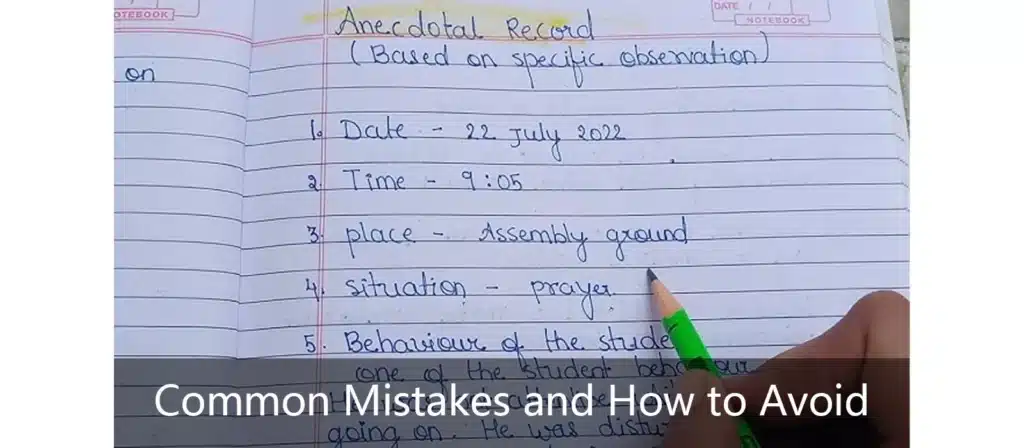
Including Subjective Language or Personal Bias
One of the most common mistakes in anecdotal records is including personal opinions or emotional interpretations, such as saying a child was “rude” or “angry.” These words reflect the adult’s perception rather than an objective account of the child’s behavior. When records become subjective, they lose their value for assessment and may introduce bias or misrepresentation.
To avoid this, stick strictly to what you can see and hear. Instead of writing, “Liam was upset,” document the observable behavior: “Liam crossed his arms, frowned, and turned away when asked to clean up.” This keeps your record factual, neutral, and useful for assessment or reflection.
Being Too Vague or Incomplete
Educators often write observations that are too brief or lacking context, like “played with blocks” or “cried at snack time.” Without specifics, it’s hard to assess what learning or development occurred, and the observation becomes almost unusable for curriculum planning.
Always aim to include the who, what, when, where, and how. For example, “At 10:30 a.m., during block play, Mia stacked five blocks, then said, ‘It’s a tower!’ and clapped her hands.” This gives a clearer picture of both the action and its developmental significance.
Delaying Documentation
Many educators postpone writing down observations due to time constraints, intending to do it later. Unfortunately, this delay can lead to forgotten details or added assumptions, which reduces the accuracy and objectivity of the record.
Use quick tools like sticky notes, pocket notebooks, or mobile apps to jot down key details in the moment. You can always expand and formalize the record later, but immediate note-taking helps preserve authenticity.
Focusing on a Few Children Repeatedly
It’s easy to unintentionally focus observations on the most vocal or active children while quieter or more independent ones receive little to no documentation. This skews the developmental profile of your class and may result in some children’s needs being overlooked.
To avoid this, use an observation tracking sheet or roster. Make sure every child is observed at regular intervals across different activities and developmental areas. This ensures balanced, equitable attention.
Including Unnecessary Details
Sometimes, observations include too much background information or unrelated context, such as detailed descriptions of classroom layout or other children’s actions not directly related to the event.
Keep your record focused on the observed child and the relevant behavior. Include only those environmental details that provide meaningful context, such as noting that the child was in a noisy or quiet area, if it affects the behavior.
Not Connecting Observations to Learning Goals
Without tying anecdotal records to learning standards or developmental domains, it’s difficult to use them effectively for planning or assessment. The record may become just a diary entry instead of a teaching tool.
Always tag your observations with related domains like “language,” “social-emotional,” or “fine motor.” This makes your documentation purposeful and easily applicable to instruction, evaluations, or progress reports.


FAQs
- What is the purpose of anecdotal records in early childhood education?
Anecdotal records are used to document specific observations of a child’s behavior, actions, or learning moments in natural settings. They help educators assess development, plan instruction, and communicate effectively with families. - How often should I write anecdotal records for each child?
Ideally, each child should have multiple anecdotal observations recorded each week, covering different developmental areas. Using a rotation schedule can help ensure balanced coverage across your group. - How long should an anecdotal record be?
A good anecdotal record is brief but detailed—typically 3–5 sentences. It should clearly describe the event without interpretation and include relevant contextual details like time, location, and setting. - Can anecdotal records be used for formal assessments?
Yes. When collected systematically and tied to learning objectives, anecdotal records provide qualitative evidence that supports developmental assessments, IEP goals, and progress reports. - Are anecdotal records confidential?
Absolutely. They should be stored securely (digitally or in locked files) and shared only with authorized personnel and the child’s family to ensure privacy and comply with educational regulations. - How do I avoid bias in anecdotal observations?
Stick to objective, observable facts and avoid personal judgments or emotional language. Use standardized formats and receive regular training to maintain consistency and fairness. - Should anecdotal records include direct quotes from children?
Yes, when possible. Including exact words helps preserve authenticity and provides insight into language development, emotional expression, or cognitive thinking. - Can families contribute to anecdotal records?
Definitely! Family input adds depth and helps educators understand the child’s behavior and development across settings. Some programs include “family anecdotes” in the child’s learning portfolio. - What’s the best way to organize anecdotal records?
Use folders, binders, or digital systems sorted by child and developmental domain. Include dates and tags to make retrieval easy. Portfolios are also a helpful way to compile records over time. - Do anecdotal records replace other assessment tools?
No. Anecdotal records are one part of a comprehensive assessment system. They are most effective when used alongside tools like checklists, rating scales, and work samples.
Conclusion
Anecdotal records are a powerful, flexible tool for understanding and supporting young learners. When written with care and intention, they capture the richness of everyday classroom moments—revealing insights that standardized tests often miss. By documenting real-time behaviors and interactions, educators can make informed decisions, personalize learning, and advocate for each child’s unique journey.
With thoughtful observation, consistent formatting, and equitable coverage, anecdotal records become more than just notes—they become a narrative of growth, discovery, and development. Whether you’re a seasoned teacher or new to early childhood education, mastering this tool will deepen your practice and enhance the quality of your teaching and learning environment.

